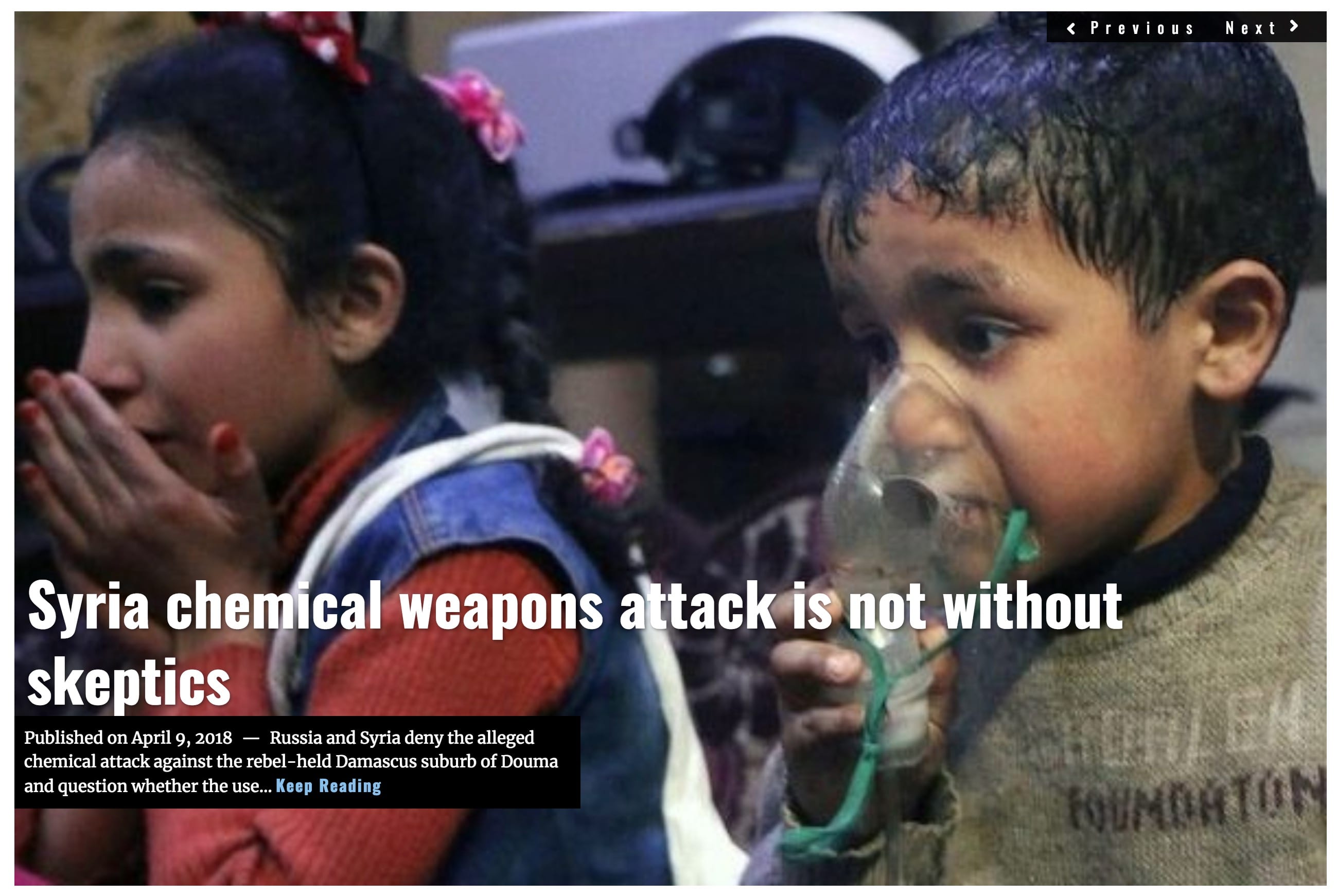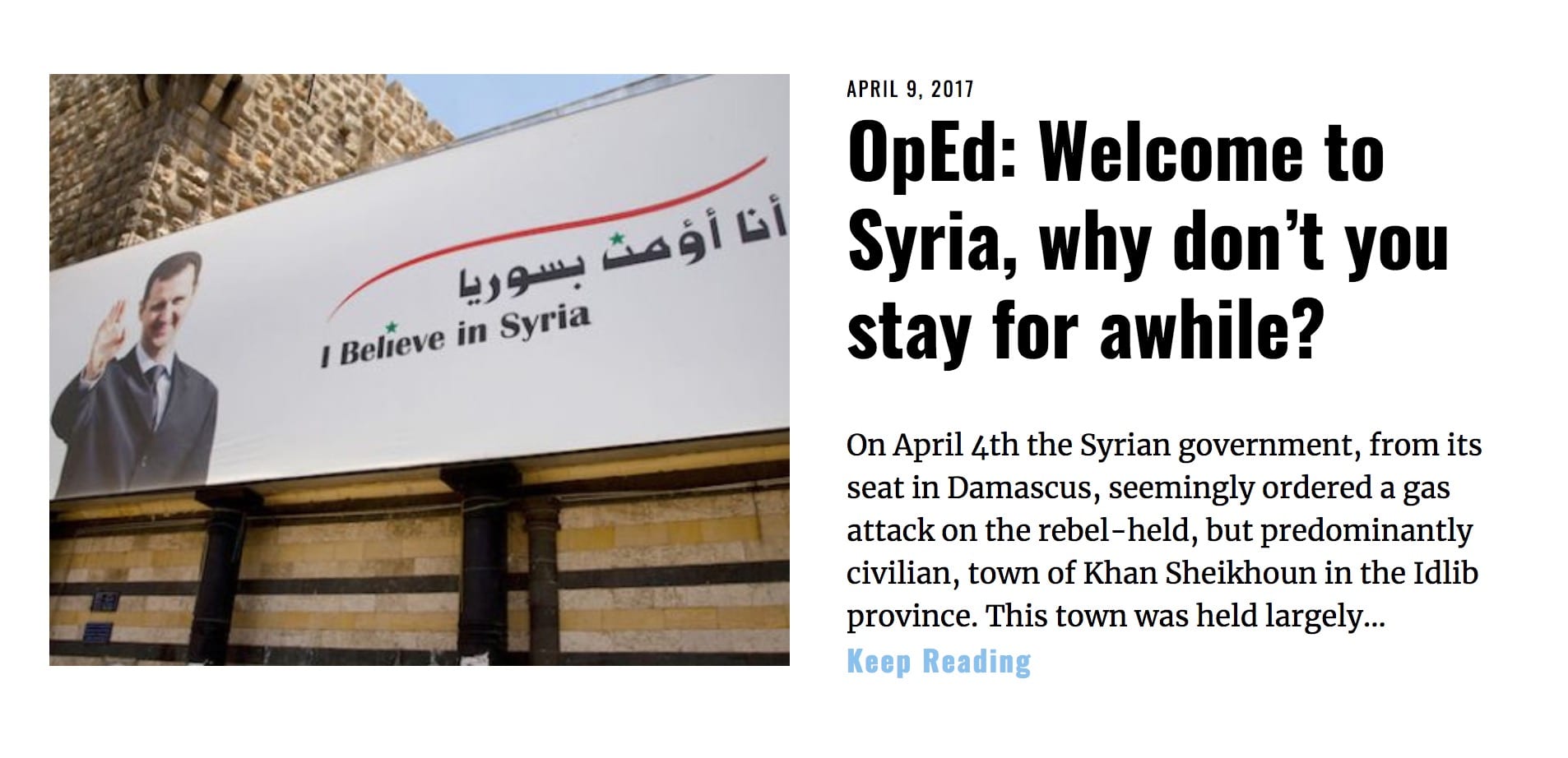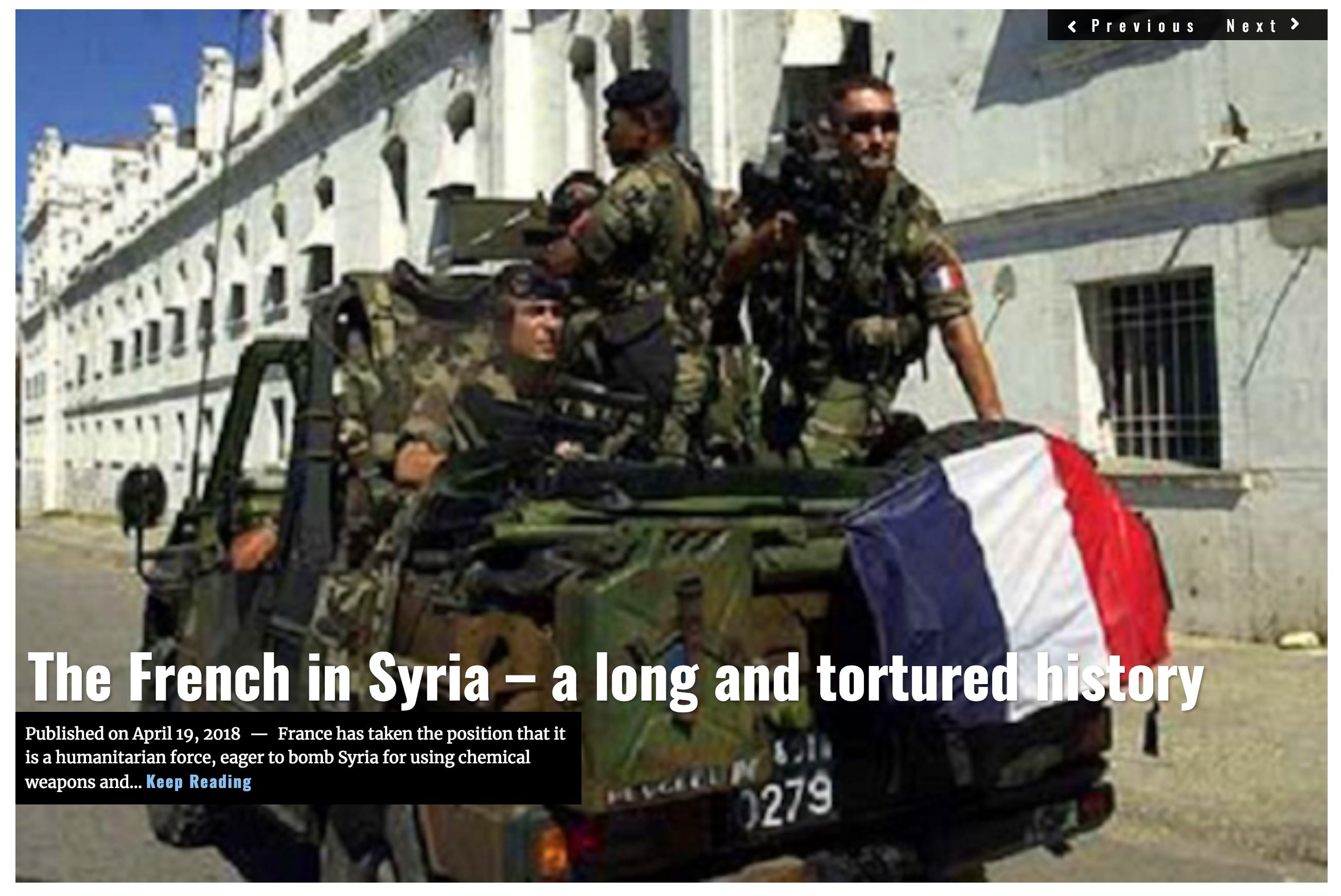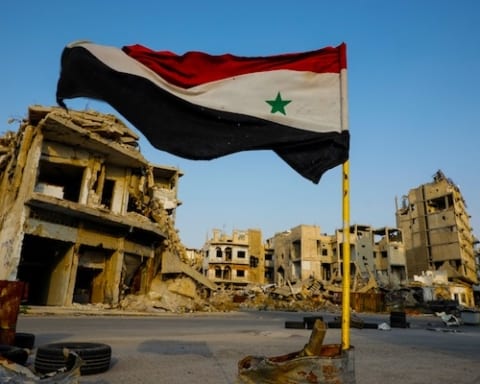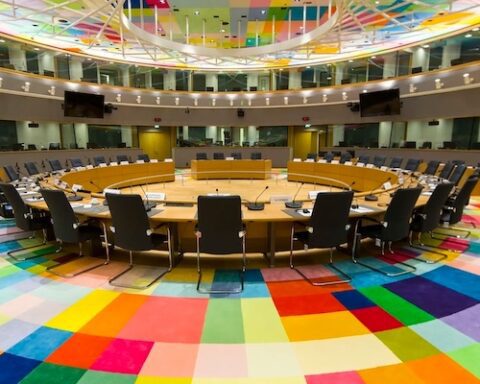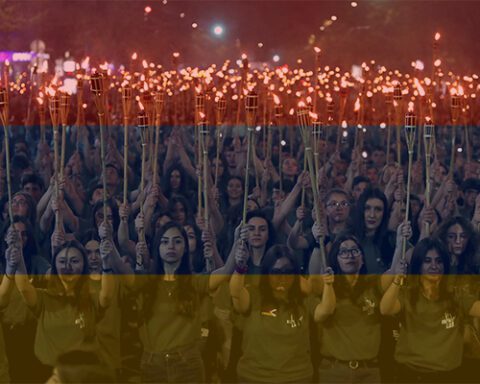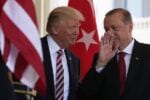After the alleged chemical attack on the Syrian city of Douma, a coalition consisting of France, the UK and the US launched a large scale attack against Bashar al-Assad’s chemical warfare capability. If the coalition’s intent was to inconvenience the Syrian government and do some grandstanding, Mission Accomplished. If the coalition’s intent was anything else, then … not so much.
On April 14, 2018, at 0402 UTC+3, the Western military coalition consisting of France, the United Kingdom and the United States carried out a series of military strikes against multiple targets in Syria. The strikes were delivered by ship-launched, submarine-launched and airborne cruise missiles. The sites struck have been described as having been selected based upon the goal of degrading the chemical weapons capability of the Damascus-government. The attacks came as a direct response to the alleged chemical attack on the predominantly civilian population of Douma on April 7th, which the West attributed to the Damascus government.
In total, 105 cruise missiles were fired by the coalition. They struck the Barzah scientific research centre outside of Damascus, the Him Shinshar chemical weapons storage site west of Homs, and a Him Shinshar chemical weapons storage bunker. The majority of these targets were located in, or near, civilian population centers. Syrian state TV reported three civilians and six Syrian soldiers were injured in the attack.
![Image [Image: US DoD]](https://limacharlienews.com/wp-content/uploads/2018/04/180413-D-ZZ999-002.jpg)
In the days following the April 7th attack, the independent Organisation for the Prohibition of Chemical Weapons (OPCW) had met with members of the Damascus government to negotiate passage to Douma. At the time of the coalition attack a Fact-Finding Mission (FFM) from OPCW was readying, pending permission from Damascus, to travel to Douma to investigate the circumstances of the alleged attack.
Russian Deputy Foreign Minister Sergei Ryabkov stated on April 16th that the arrival of the inspectors to Douma had been delayed due to the actions by the Western coalition. Many fear that Syria, and their Russian ally, are now conducting a clean-up operation to make sure the Douma scene represents their official message. As of the time of writing, there is no independent and verifiable data to conclusively say what happened, if anything, in Douma on April 7th. The Damascus government has refuted the accusations of any possible chemical attack and called the April 14th airstrikes a violation of international law.
In the hours that followed the attack, the coalition leadership, spearheaded by President Donald Trump, proudly exclaimed that the mission had been a success. President Trump even went as far as to invoke the ill fated “Mission Accomplished” cliché last used by President George W. Bush in reference to the Iraq War. It was unavoidable then, as it is now, to ask ourselves, “what exactly was the mission, and what exactly was accomplished?”
Unfortunately, in recent times, missions have been ill defined and rarely specific enough to be judged properly.
A perfectly executed strike last night. Thank you to France and the United Kingdom for their wisdom and the power of their fine Military. Could not have had a better result. Mission Accomplished!
— Donald J. Trump (@realDonaldTrump) April 14, 2018
Mission Accomplished: Failure
It is important to respond to evil misdeeds in a timely and proportionate manner. It is equally important to respond from an informed vantage point. Alas, the default American reaction to events is to spring into action. It doesn’t so much matter what the action might be, so long as there is action. This makes the US fairly predictable in how it will react to events. No US administration has, as far as this goes, been as predictable as the Trump administration.
With this in mind, it came as no shock when the politico and security rumor mill began whispering about the type of unproportional responses that the President was personally advocating for.
After days of tense meetings between the President, his staff, and the Secretary of Defense (SecDef) James Mattis, along with his staff, a compromise was reached. This compromise was among the more restrained of the options discussed, and it involved striking just three sites. Other, less restrained options had advocated striking the entirety of the Syrian military command or even political system. A set of options even involved going head-to-head with the Russian military presence in the country.
Allegedly, part of the reason this more conservative option was selected was because neither President Trump nor UK Prime Minister Theresa May wanted to have to request permission from the Senate or House of Parliament respectively. Their reluctance of wanting to seek approval of this kind is to an extent understandable.
Requesting permission from these legislative bodies could have resulted in a repeat of the August 2013 fiasco. After a devastating chemical attack on the morning of August 21, 2013, in Eastern Ghouta, the US, Britain and France arguably had the chance to remove Syrian President Bashar al Assad. The French keenly reacted and armed their planes, preparing to strike, but knew that they could not do so in any meaningful fashion by themselves. The preexisting military coalition between the French, the Americans and the British was the best course. David Cameron, Britain’s Prime Minister, sought permission from Parliament for all options available, which was turned down. US President Barack Obama, for fear of tarnishing a carefully crafted public image as that of a peacemaker, attempted to garner support in the media. Establishing a red line in the sand, the President begged Russian President Vladimir Putin to handle the matter.
By opting for a conservative missile strike this time, mirroring that of the 2017 April missile strike after the chemical attack on the town of Khan Sheikhoun, the coalition made sure that no Senate or Parliamentary approval was necessary. Yet, the door was left open for potential follow up options.
![Image Russia's President Vladimir Putin (R) shakes hands with his Syrian counterpart Bashar al-Assad, November 20, 2017 [Mikhail KLIMENTYEV / AFP]](https://limacharlienews.com/wp-content/uploads/2018/04/Putin-Assad.jpg)
As soon as the Russian Ministry of Defense (MoD) was given notice, along with the planned details, it in turn notified the Damascus government which emptied out the facilities listed. This had largely been done already, days before, in anticipation of an unannounced air strike.
Of the 105 cruise missiles, the British and French deployed variants of the Storm Shadow missile, known as SCALP EG or Missile de Croisière Naval (MdCN for Naval Cruise Missile) when in French service. The US deployed 66 Tomahawk missiles and 19 JASSM-ER missiles. Twice as many missiles had been used than the US strike against the Syrian Air Force Shayrat airbase a year earlier. The list of targets, and missile allocations were as follows: the Barzah scientific research centre (Damascus): 57 Tomahawk and 19 JASSM-ER missiles; the Him Shinshar chemical weapons complex storage site (west of Homs): 9 Tomahawk, 8 Storm Shadow, 3 MdCN, and 2 SCALP missiles; the Him Shinshar chemical weapons complex bunker: 7 SCALP missiles.
The Result?
Unfortunately, throughout modern conflicts, the US has actively implemented a feel-good, fiscally irresponsible strategy of controlled no-fly zones and punitive airstrikes. This strategy was of little value during the Baltic crisis, it did even less in Iraq during the 1990s, and it appears it has had little effect on the ground in Syria. Having crippled, yet not annihilated Syria’s chemical weapons program, the coalition’s proportional response inflicted no real damage to Assad’s war apparatus, other than to cause a minor inconvenience.
After the missile strikes, the primary concern was not whether civilian collateral or potential chemical leaks had resulted. It was what the Russian response would be. In the days leading up to the strike, Russia had stated that it would find means to retaliate if the international community took a military course of action. As some days have passed since the attack, it appears the punitive raid on Syria’s chemical weapons capabilities have led to little in response from Russia. This is probably due to the restricted option taken by the coalition.
Ultimately, the April 14th missile attack was largely as effective as the Shayrat airbase attack in 2017. If the mission was to strike a feel-good, yet shallow blow of little meaning to Syria’s chemical weapons capability, then indeed the mission was accomplished with bells and whistles (to the tune of $102 million in missiles alone). If the mission was to do something meaningful, then certainly the mission’s parameters were in dire need of being redefined.

Unto the Chaos
To date, the Syrian Civil War has taken the lives of at least 450,000 people. It is an unequivocal humanitarian and cultural disaster that may take the Levant region generations to recover from.
To the West, the Syrian conflict has been boiled down to a simplistic black and white – with some minor gray between the lines – affair. Western involvement was initially sold as part of the quest for freedom, with rhetoric harking back to the Monroe Doctrine of yore, and thus part of the uninformed war against stabilizing dictatorships in the Middle East.
The reality was that the West did not truly seek to remove Assad from Damascus. Rather, the goal was to interfere with Russian and Iranian operations in the region at the cost-efficient-price of some guns and the lives of hopeful Arabs.
What began in 2011 as a predominantly localized domestic problem in the wake of the Arab Spring movement, was amplified by the violent response by the Syrian government. In under a year, the Syrian uprising devolved from a mostly peaceful and organic revolution, one that could be idealistically described as adhering to the best potentials of the region, into a full-scale sectarian civil war.
Syrian society has historically been largely apolitical, in part due to the totalitarian nature of the regimes that have ruled since its independence, but also because of the fundamental spirit of the nation. Syrian citizens have, as a national identity, largely viewed themselves as above their neighboring state’s trifles; wiser, more cohesive and less sectarian than their Lebanese and Iraqi neighbors who were constantly in a state of civil war, or gearing up for one. Instead of being victims of the struggles the region is famous for, Syrians believed themselves to be rulers of the chaos. As a result, Syrian society was ill equipped to handle the security and civility vacuum that the civil war brought within their own borders.
For many years, as violence continued to find new peaks, revolutionary activists and sympathizing militia movements resisted the “Civil War” label, fearing that it would diminish the cause and make a complex situation even further obfuscated. The West was all too willing to go along with this narrative, as it sought to train and finance a variety of loosely tied together groups, such as the initial rendition of the Free Syrian Army (FSA). After all, the West could overtly meddle with a call for freedom, which would in turn disrupt Iran and one of the last remaining stable dictatorships in the Levant. But a Civil War? Civil Wars are messy and complex.
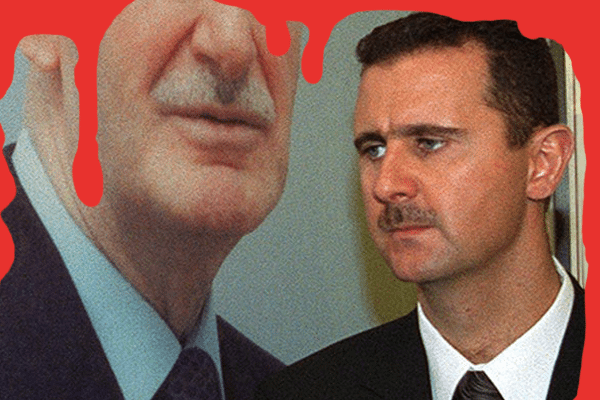
The Damascus government, under the leadership of President Assad, was all too willing to go along with the narrative of avoiding the label of civil war. It instead took the more traditionalist Arab strongman line, which has historically been a good choice for leaders across the region, focusing on projecting the image of a state that had retained its legitimacy and functioned properly.
In the early days, Damascus chose to undermine its opposition by referring to them as merely bands of thieves and rabble rousers, criminal and destabilizing in nature. As opposition forces began capturing, and holding territory, winning victories against the Syrian Arab Army (SAA), Damascus was forced to acknowledge the potency and wide appeal of the uprising. It would eventually frame it as a massive foreign-driven affair, so as to mobilise its loyalists.
As opposition forces began meeting fiercer opposition, infighting began. From the chaos that came as Syrian society crumbled, arose the extremists. By mid 2012 the opposition forces, which had begun with some fairly decent secular and academic roots, were largely replaced by those that had thrown neighboring nations into the abyss of unending despair. The old leadership of Al Qaeda found a new haven in this security vacuum, and fresh blood soon joined. As the Salafist movements gained strength, the secular movements began to diminish. They were no match for the battle hardened Salafist Jihadists.
By 2013, Syria’s social fabric, rural and urban alike, was in tatters. Violence had taken a myriad of forms. Civilians found nowhere safe within their own country.
[Read more about the history of the Syrian Civil War here]
The reality was that the West did not truly seek to remove Assad from Damascus. Rather, the goal was to interfere with Russian and Iranian operations in the region at the cost-efficient-price of some guns and the lives of hopeful Arabs.
The civil war in Syria is now beyond what the West can undertake. There are no good options left. The situation is too complex, and too multi-nuanced at this point to allow for simplistic military operations. The reality is that the best course of action remaining for the West is to temporarily approach the situation in a non-interventionist fashion.
If the West chooses to interfere at this point, it must do so with the full knowledge of the Pottery Barn rule – “you break it, you bought it” – the same rule that Colin Powell wanted to apply to the Iraqi conflict, yet something the US has consistently failed to do.
Small scaled intelligence operations might be possible, but only with the intent of creating soft power influences to attune the situation rather than overrule it. This is a capability that the US has arguably lost in the post-Cold War atmosphere.
America. Bringing it on since …
Alas, it is not in the nature of the US to stay out of a fight. Even one where it is unclear just who are the good, the bad or the ugly. We usually leave such definitions up to our allies, Israel, Pakistan and Saudi Arabia, to decide and tell us.
Some have suggested, as an option, to escalate the Western military coalition’s involvement; to impose no-fly zones; to continue punitive air strikes against Assad’s forces. While this would send a clear message that future chemical weapons use is not to be tolerated, it would also entail a great expenditure at a time when the US is unwilling to carry it.
Worse yet, the possibility remains that current battlefield technologies, and the dynamics of the players on the ground in Syria, are such that even highly advanced Western fighter jets are not beyond the reach of militia weaponry. Is the US willing to assume the great human cost and risk the demoralizing loss of one of its state-of-the-art aircraft, being taken down by a group it formerly supported? From Assad’s perspective, a no-fly zone over Syria would simply mean a further increase in the use of indiscriminate artillery against rebel, militia and civilian enclaves alike.
Another supposed option is the continued arming of opposition groups, much like the Free Syrian Army (FSA), which used to be the premier token US-supported group in Syria. This before the FSA morphed into something more closely affiliated with the Syrian al Qaeda group al Nusra, before ultimately becoming a Turkish proxy militia group. Simply put, any large scale support for a militia group is likely to backfire as the way of the landscape moves forward faster than the US can analyze and respond to it.
A supposed third option is the most distasteful one: outmatch the ferocity, in both fiscal investment and military prowess, that Russia, Iran, and Syria can muster. This approach would call for a full intervention into Syria, breaking what frail basis exists of a centralized state. The cost in coalition lives would rival, if not outmatch, that of the Iraqi incursion.
The simple truth is, it is best to let the ambers of the civil war die out, while mutually supporting humanitarian causes. Once Russia and Assad have decidedly won the war, deal with that reality. This could also include such Western notions of justice as attempting to drag Assad and his confederates in front of the Hague for war crimes.
Toxic Redux
On April 9th, 2017, Lima Charlie News published my article entitled “Welcome to Syria, why don’t you stay for awhile?” about the situation as it stood at the time. Today, it feels as if little has changed. Certainly, the Islamic State has predictably gone from being a strategic consideration into becoming a tactical one, but the dynamics of the rebels and militia groups alike, along with the fault-lines of the Syrian society remain volatile.
Writing about the Syrian Civil War has, at this point, become a case of writing about unceasing carnage on repeat. The alleged April 7th chemical attack, and its aftermath on Douma mirrors that of the April 4th, 2017 attack on the town of Khan Sheikhoun.
The number of reported dead change, but the rhetoric does not.
In the case of Khan Sheikhoun, the US acted swiftly and decisively, before it had received enough verifiable data to decipher what had happened on the ground – much like it has done in regards to Douma. On February 2nd, 2018, SecDef Mattis went on record to say that they still, to this day, do not know what truly happened on the ground at Khan Sheikhoun on that fateful day. It is not outside the realm of possibility that the SecDef will, a year from now, have to make a similar statement regarding the alleged April 7th attack on Douma. The Western coalition response to the recent incident nearly mirrored, albeit in an escalated fashion, that of a year ago.
The simple truth is, it is best to let the ambers of the civil war die out, while mutually supporting humanitarian causes. Once Russia and Assad have decidedly won the war, deal with that reality.
While Western leaders may claim some moral high ground, it is a hollow one, that bears no actual value. The Damascus government’s conventional arsenal consisting of rockets, barrel bombs, mortars and small arms, is what it survives on, not its relatively minor chemical agent arsenal. These are the tools of war that have caused hundreds of thousands of deaths, mostly civilians, in the seven years that the present war has raged. The actions by the coalition serve to show the Syrian rebels, some of which are directly supported by the US and other Western powers, that there is no real interest in leveling the playing field. All that is being done is to cause disruption and allocation of resources for Iran and Russia, through Syria. Removing or even undermining the Damascus government would, at the present point, ultimately only harm a region that we need stabilized rather than destabilized.
The fact is, the world has no option other than to let Assad stay where he is – for now.
John Sjoholm, Lima Charlie News
[Edited by Anthony A. LoPresti]
John Sjoholm is Lima Charlie’s Middle East Bureau Chief, Managing Editor, and founder of the consulting firm Erudite Group. A seasoned expert on Middle East and North Africa matters, he has a background in security contracting and has served as a geopolitical advisor to regional leaders. He was educated in religion and languages in Sana’a, Yemen, and Cairo, Egypt, and has lived in the region since 2005, contributing to numerous Western-supported stabilisation projects. He currently resides in Jordan. Follow John on Twitter @JohnSjoholmLC
Lima Charlie World provides global news, featuring insight & analysis by military veterans, intelligence professionals and foreign policy experts Worldwide.
For up-to-date news, please follow us on twitter at @LimaCharlieNews
In case you missed it:

![Image The world has no option but to let Assad stay where he is ... for now [Lima Charlie News]](https://limacharlienews.com/wp-content/uploads/2018/04/The-world-has-no-option-but-to-let-Assad-stay-where-he-is-...-for-the-time-being.png)
